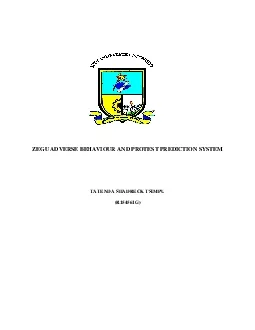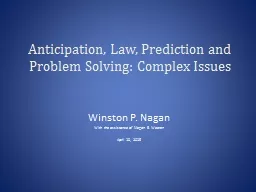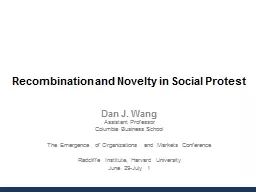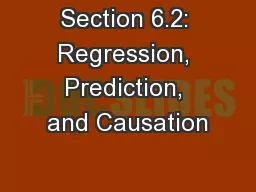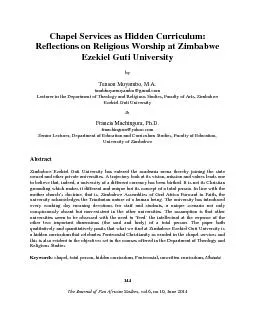PDF-ZEGU ADVERSE BEHAVIOUR AND PROTEST PREDICTION
Author : fauna | Published Date : 2021-09-14
SYSTEMTATENDA SHADRECK TSIMPUR154561GZEGU ADVERSE BEHAVIOUR AND PROTEST PREDICTION SYSTEMBYTATENDA SHADRECK TSIMPUR154561GSubmitted in partial fulfilment of the
Presentation Embed Code
Download Presentation
Download Presentation The PPT/PDF document "ZEGU ADVERSE BEHAVIOUR AND PROTEST PREDI..." is the property of its rightful owner. Permission is granted to download and print the materials on this website for personal, non-commercial use only, and to display it on your personal computer provided you do not modify the materials and that you retain all copyright notices contained in the materials. By downloading content from our website, you accept the terms of this agreement.
ZEGU ADVERSE BEHAVIOUR AND PROTEST PREDICTION: Transcript
SYSTEMTATENDA SHADRECK TSIMPUR154561GZEGU ADVERSE BEHAVIOUR AND PROTEST PREDICTION SYSTEMBYTATENDA SHADRECK TSIMPUR154561GSubmitted in partial fulfilment of the requirements for the degree ofBSc Honou. OBJECTIVES. Describe Adverse Events, Risks and Problems that can Occur in . H. uman . S. ubjects . R. esearch . C. ompliance with Safety . R. eporting . R. egulations in Clinical Research. Identify Current Systems of Patient Care and Patient Safety in Research. . May 21, 2012 – Call 1 of 2. Sponsoring Offices:. National Center for Ethics in Health Care . Office of Quality, Safety and Value, Risk Management Program. Welcome. Materials from this call as well as the call from August 6, 2012 (Critical Thinking About Institutional Disclosure of Adverse Events to Patients) are available on these websites:. Winston P. Nagan . With the assistance of Megan E. Weeren . April 10, 2015. Anticipation will invariably entail complexity in the context of the individual self systems functioning in the social process and interacting in social relations.. People in the 13 British colonies. Protest of the Stamp Act. You are a citizen of the American colonies. You . will be . creating a Protest Sign on an 8.5 x 11 piece . of paper . that protests one of the Actions of . Dan J. Wang. Assistant Professor. Columbia Business School. The Emergence of Organizations and Markets Conference. Radcliffe Institute, Harvard University. June 29-July 1. The Autocatalysis Recipe. Ingredient List:. Transcend: to go beyond. What is transcendentalism?. Philosophy that began in the 1830’s . Mostly consisted of New Englanders (i.e. Transcendental . C. lub of Boston, headed by Ralph Waldo Emerson). L/O – To identify the reasons for protest in the 1960s. Reasons for Protest. The number of students grew throughout the 1960s but their dissatisfaction with society also grew.. This led to increased pressure on government to change society, especially over the issue of the Vietnam War.. Pg 337..345: 3b, 6b (form and strength). Page 350..359: 10b, 12a, 16c, 16e. Homework Turn In…. A straight line that describes how a response variable y changes as an explanatory variable x changes. . Define basic facts and terms concerning protests. Discuss protests to the agency. Discuss protests to the GAO. Prepare an agency report. Describe the process after the report is filed. List the methods used to resolve protests. Clinical and Institutional Disclosure of Adverse Events to Patients Call 1 of 2 Delivered May 21, 2012 updated to reflect directive’s reissue (October 31, 2018) Sponsoring Offices: National Center for Ethics in Health Care Ghana in Collaboration with Zimbabwe Ezekiel Guti University, Zimbabwe is pleased to announce a 3 - day Scientific Writing Workshop - 19 October, 2018 Zimbabwe Ezekiel Guti University (ZEGU) Harare IntroductionThe quality of the Zimbabwean universities’ graduates has recently been under serious scrutiny. The coming of Zimbabwe Ezekiel Guti University (ZEGU) on the tertiary academic platform : Overview for Healthcare Providers Page 1 of 2 V DH/OEPI/DSI Febr uary 2019 Virginia Department of Health Vaccinia Disease and Vaccinia Adverse Events : Overview for Healthcare Providers Organism Investigator Kick-off Meeting. January 30-31, Clearwater, Florida. Jodie Riley, MISM and Robert Silbergleit. Adverse Events. Adverse Events (AEs) are “. . . any . untoward. medical occurrence in a subject that was not previously identified which does not necessarily have a causal relationship to the study drug…” .
Download Document
Here is the link to download the presentation.
"ZEGU ADVERSE BEHAVIOUR AND PROTEST PREDICTION"The content belongs to its owner. You may download and print it for personal use, without modification, and keep all copyright notices. By downloading, you agree to these terms.
Related Documents

